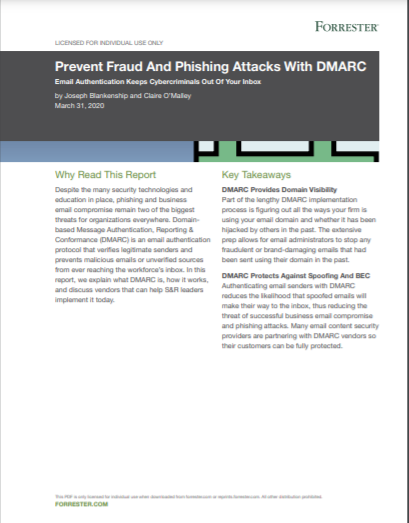Apple's AirTag tracker has already been hacked
An IT security researcher redirected the device’s finding feature to his own website

Apple’s AirTag has only been out for around a week, but it’s already been hacked.
A German cyber security researcher cracked the AirTag’s microcontroller, the tiny integrated circuit that controls the device.
The AirTag, a small locator that retails for $29, can help you find your car keys or anything else it’s attached to. Normally, when you use your phone to find an AirTag, your phone opens in the “Find My” website at found.apple.com to initiate the “Lost Mode” process. However, the researcher found he could redirect the microcontroller to his personal website instead.
Security researcher Thomas Roth, who goes by the name Stack Smashing, posted a video of the process to Twitter, and wrote: “After hours of trying (and bricking 2 AirTags) I managed to break into the microcontroller of the AirTag."
This means hackers could potentially direct hacked AirTags to phishing or malware sites, and it remains to be seen whether Apple will implement some mechanism to block this sort of attack.
Although this sounds alarming, the tech review website SlashGear cautions that even if a hacker can reprogram an AirTag, “the process and the end result might not yet be worth the worry.”
RELATED RESOURCE

Prevent fraud and phishing attacks with DMARC
How to use domain-based message authentication, reporting, and conformance for email security
“The security researcher hasn’t disclosed yet the process but he admits bricking at least two AirTags to get there,” SlashGear noted. “Unless the tracker’s firmware can be modified remotely over the air, the only way you’ll get a hacked AirTag would be if you acquired it through other parties.”
Get the ITPro daily newsletter
Sign up today and you will receive a free copy of our Future Focus 2025 report - the leading guidance on AI, cybersecurity and other IT challenges as per 700+ senior executives
As always, there are proactive ways to avoid falling victim to phishing and malware campaigns like this. When you navigate to a site, always verify the URL looks exactly as you expect. Many times, these spoofed sites will have one character off or a different domain extension.
If you see anything suspicious in the link, close the browser, open a fresh browser and navigate to your target site by typing it manually into the URL bar.
-
 Should AI PCs be part of your next hardware refresh?
Should AI PCs be part of your next hardware refresh?AI PCs are fast becoming a business staple and a surefire way to future-proof your business
By Bobby Hellard
-
 Westcon-Comstor and Vectra AI launch brace of new channel initiatives
Westcon-Comstor and Vectra AI launch brace of new channel initiativesNews Westcon-Comstor and Vectra AI have announced the launch of two new channel growth initiatives focused on the managed security service provider (MSSP) space and AWS Marketplace.
By Daniel Todd
-
 Why the Space Force wants white hats to attack a satellite
Why the Space Force wants white hats to attack a satelliteCase study Authorities hope the first-of-its-kind competition could bring benefits to the cyber sector
By James O'Malley
-
 OpenAI to pay up to $20k in rewards through new bug bounty program
OpenAI to pay up to $20k in rewards through new bug bounty programNews The move follows a period of unrest over data security concerns
By Ross Kelly
-
 New ‘DarkBit’ ransomware gang shuts down Technion, demands $1.7 million ransom
New ‘DarkBit’ ransomware gang shuts down Technion, demands $1.7 million ransomNews A politically charged ransom note suggests DarkBit are one of the newest hacktivist gangs to emerge in recent months
By Ross Kelly
-
 Research: Luxury cars and emergency services vehicles vulnerable to remote takeover
Research: Luxury cars and emergency services vehicles vulnerable to remote takeoverNews A "global API issue" has been highlighted through months-long research into brands such as Ferrari and Mercedes-Benz, leaving owners open to hacking, account takeovers, and more
By Rory Bathgate
-
 Podcast transcript: Meet the cyborg hacker
Podcast transcript: Meet the cyborg hackerIT Pro Podcast Read the full transcript for this episode of the IT Pro Podcast
By IT Pro
-
 The IT Pro Podcast: Meet the cyborg hacker
The IT Pro Podcast: Meet the cyborg hackerIT Pro Podcast Resistance is futile - offensive biotech implants are already here
By IT Pro
-
 SpaceX bug bounty offers up to $25,000 per Starlink exploit
SpaceX bug bounty offers up to $25,000 per Starlink exploitNews The spacecraft manufacturer has offered white hats immunity to exploit a wide range of Starlink systems, with a dedicated report page
By Rory Bathgate
-
 Nomad happy to forgive hackers if they return 90% of $190 million that was stolen
Nomad happy to forgive hackers if they return 90% of $190 million that was stolenNews The crypto bridge is offering 'white hat hackers' a 10% bounty following the attack earlier this week
By Zach Marzouk